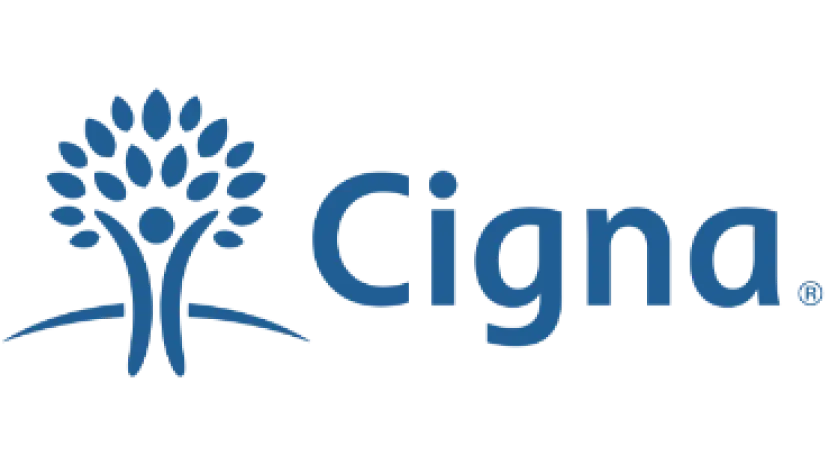



In the ever-evolving landscape of addiction treatment, one method stands out for its innovative approach to addressing alcohol use disorder (AUD): The Sinclair Method (TSM). Unlike traditional models that mandate abstinence as the cornerstone of recovery, TSM offers a paradigm shift—embracing the concept of medication-assisted treatment to fundamentally alter the brain’s response to alcohol. Developed by Dr. John Sinclair, this evidence-based method leverages the opioid antagonist naltrexone to disrupt the cycle of dependency, offering hope to those for whom conventional treatments have fallen short.
At the heart of TSM lies naltrexone, a medication approved by the FDA in 1994 for treating AUD. Its role is to block the endorphins released by alcohol consumption, thereby dulling the rewarding sensation that drives the cycle of addiction. This process of operant conditioning slowly but surely diminishes the association of alcohol with pleasure, steering individuals towards a path of reduced drinking or complete abstinence, defined on their own terms.
TSM is not a one-size-fits-all solution. It challenges deeply entrenched beliefs about addiction recovery, sparking debate and skepticism among traditionalists. Despite this, the method has garnered attention for its success rates and patient-centered approach, offering a lifeline to those seeking an alternative to the abstinence-only paradigm.
Alcohol Use Disorder (AUD) is a complex and multifaceted condition characterized not just by the compulsive consumption of alcohol despite adverse consequences but also by a physiological and psychological dependence that can deeply affect an individual’s life. Traditionally, the diagnosis and treatment of AUD have centered around recognizing these patterns of alcohol abuse and implementing strategies aimed at achieving and maintaining abstinence.
However, the path to recovery is not uniform for everyone. Traditional treatments for alcoholism, such as Alcoholics Anonymous (AA) and other abstinence-based programs, have been life-saving for many. These approaches typically involve a complete cessation of alcohol use, coupled with support from group meetings, counseling, and, sometimes, a spiritual component. While effective for some, this one-size-fits-all strategy does not accommodate the diverse experiences and needs of all individuals struggling with alcohol dependence.
The challenge with conventional treatment methods lies in their singular focus on abstinence as the primary measure of success. This perspective often overlooks the nuanced nature of addiction, where factors such as genetics, environment, and personal history play significant roles in an individual’s relationship with alcohol. Moreover, the strict abstinence model can inadvertently exclude those who are unable or unwilling to commit to total sobriety, leaving them without viable alternatives for managing their condition.
The Alcohol Deprivation Effect, a phenomenon observed in both humans and animals, illustrates another complication in the abstinence-only approach. It suggests that periods of alcohol abstinence can actually heighten cravings and increase the risk of heavy drinking upon relapse. This effect challenges the notion that abstaining from alcohol alone is sufficient to address the underlying mechanisms of addiction. Instead, it highlights the need for treatments that can mitigate the brain’s conditioned responses to alcohol.
The Sinclair Method (TSM) is a paradigm shift in the treatment of AUD that acknowledges the limitations of the abstinence-only model. TSM introduces a nuanced understanding of alcoholism as a condition that can be managed through a combination of medication-assisted treatment and behavioral change. By targeting the brain’s reward system directly, TSM offers a different path to recovery, one that accommodates the possibility of moderated drinking as a step toward reducing alcohol dependency.
The Sinclair Method (TSM) represents a significant departure from traditional approaches to treating Alcohol Use Disorder (AUD), rooted in decades of scientific research and clinical observation. Its inception is credited to Dr. John D. Sinclair, an American researcher whose work in Finland led to a groundbreaking understanding of the neurochemical underpinnings of addiction. Dr. Sinclair’s journey into the realm of AUD treatment began with a simple yet profound hypothesis: if the brain could be conditioned to develop a dependency on alcohol through positive reinforcement, perhaps it could also be reconditioned to diminish this dependency.
In the mid-20th century, the prevailing methods for treating alcoholism largely revolved around psychotherapy, support groups, and the push for abstinence. However, Dr. Sinclair was intrigued by the potential of pharmacological interventions to alter the brain’s response to alcohol. His research focused on the role of endorphins—naturally occurring opioids in the brain that are released in response to drinking alcohol and contribute to the sense of pleasure and reward that encourages further drinking.
Dr. Sinclair’s pivotal discovery came from his work with animal models, where he observed that the administration of naltrexone, an opioid antagonist, blocked the endorphins released by alcohol consumption. This led to a crucial insight: without the endorphin-mediated reward, the animals’ motivation to consume alcohol diminished over time. Dr. Sinclair termed this phenomenon “pharmacological extinction,” positing that the same principle could be applied to treat human alcohol dependency.
Pharmacological extinction is based on the principles of operant conditioning, a form of learning in which behaviors are influenced by their consequences. By blocking the rewarding effects of alcohol, naltrexone disrupts the cycle of reinforcement that leads to compulsive drinking. This approach suggested a radical new pathway to recovery—one that did not require immediate abstinence but instead focused on gradually reducing the desire to drink.
In the late 20th century, Dr. Sinclair’s theories began to gain traction as he conducted clinical trials in Finland to test the effectiveness of naltrexone in treating AUD. The results were compelling, showing that patients who took naltrexone before drinking alcohol experienced a significant reduction in their craving and consumption over time. Despite these promising findings, TSM faced skepticism and resistance from a treatment community that was largely anchored in the abstinence-only model.
Nevertheless, Dr. Sinclair’s work laid the foundation for a new approach to addiction treatment, emphasizing the potential of medication-assisted therapy to change the way individuals relate to alcohol. His legacy is The Sinclair Method—a testament to the power of scientific inquiry to challenge conventions and offer hope to those struggling with AUD.
At the core of The Sinclair Method (TSM) is a simple yet revolutionary idea: use medication to disrupt the brain’s reward cycle associated with alcohol consumption, thereby reducing cravings and, ultimately, alcohol intake. This method, developed through the pioneering work of Dr. John D. Sinclair, utilizes naltrexone, an opioid antagonist, to target the neurochemical mechanisms that fuel alcohol addiction. Here’s a closer look at how TSM offers a path to recovery that differs markedly from traditional abstinence-based treatments.
Naltrexone is central to The Sinclair Method’s effectiveness. Approved by the FDA in 1994 for treating Alcohol Use Disorder (AUD), naltrexone works by binding to the brain’s opioid receptors, thereby blocking the release of endorphins triggered by alcohol consumption. In the context of TSM, the medication is not taken daily but rather is administered about one hour before the individual plans to drink alcohol.
This timing is critical: by taking naltrexone before drinking, the usual endorphin rush and subsequent reward sensation from alcohol are significantly diminished. Over time, this leads to what Dr. Sinclair described as “pharmacological extinction,” the process by which the brain’s association between alcohol and pleasure is gradually weakened. Without the reinforcement of alcohol’s pleasurable effects, the compulsion to drink begins to fade, reducing both cravings and the quantity of alcohol consumed.
Clinical studies and patient reports have highlighted the effectiveness of The Sinclair Method in reducing alcohol dependence. With adherence to the protocol, approximately 78% of individuals experience a meaningful decrease in their drinking levels. Success with TSM is defined variably, from achieving controlled drinking habits to complete sobriety, reflecting the method’s adaptability to individual needs and definitions of recovery.
The Sinclair Method (TSM) has garnered significant attention not just for its innovative approach to treating Alcohol Use Disorder (AUD) but also for the compelling evidence supporting its effectiveness. Unlike traditional methods that often emphasize abstinence as the sole indicator of success, TSM offers a nuanced perspective, defining success in terms of reduced cravings, decreased alcohol consumption, and improved control over drinking habits. This section delves into the scientific backing and clinical outcomes associated with TSM, shedding light on why it stands as a promising option for many struggling with alcohol dependence.
Support for naltrexone’s effectiveness in treating AUD extends beyond TSM-specific research. The COMBINE study, a significant clinical trial involving 952 participants with alcohol dependence, highlighted naltrexone’s role in reducing heavy drinking when combined with medical management counseling. This and other studies underscore naltrexone’s capacity to lessen alcohol cravings, reduce consumption, and slow the progression of drinking behaviors, further validating the pharmacological basis of TSM.
The Sinclair Method (TSM) offers a pragmatic and evidence-based approach to managing Alcohol Use Disorder (AUD), distinctively utilizing naltrexone to alter the brain’s reward mechanisms associated with alcohol consumption. This section outlines the steps involved in implementing TSM, considerations for individuals embarking on this treatment path, and insights into navigating the journey toward reduced alcohol dependence or abstinence.
Implementing The Sinclair Method represents a proactive step towards regaining control over alcohol use. By adhering to the prescribed protocol, individuals can embark on a journey towards reducing their alcohol dependence, with the flexibility to tailor the method to their personal goals and circumstances. While TSM may not be a universal solution for everyone with AUD, its evidence-based approach offers a valuable alternative for those seeking a different path to recovery.
The Sinclair Method (TSM), despite its evidence-based approach and potential to significantly alter the landscape of Alcohol Use Disorder (AUD) treatment, has not been without its share of criticism and controversy. This section delves into the various criticisms TSM has faced, exploring the roots of these controversies and the ongoing debate within the addiction treatment community.
A core area of contention stems from TSM’s departure from the traditional abstinence-only model. For decades, the cornerstone of AUD treatment has been the complete cessation of alcohol consumption, a principle deeply embedded in programs like Alcoholics Anonymous (AA) and widely endorsed by the medical community. TSM’s allowance for moderated drinking, facilitated through the use of naltrexone, challenges this long-standing paradigm, leading to skepticism and resistance among some practitioners and advocates of abstinence-based treatments.
Critics of TSM have raised ethical concerns regarding the method’s approach to reducing alcohol dependency. The notion of prescribing medication to enable individuals with AUD to continue drinking, albeit in a controlled manner, has sparked debate about the implications of such a strategy. Critics argue that it may inadvertently normalize or perpetuate drinking behaviors rather than encourage individuals to confront and overcome their dependency.
The controversy surrounding TSM is further fueled by misinterpretations of its goals. Detractors often claim that TSM simply exchanges one dependency for another or that it lacks a clear pathway to sobriety. These criticisms overlook the method’s underlying objective: to utilize pharmacological extinction as a means to diminish the reinforcing effects of alcohol, thereby reducing cravings and consumption. TSM’s nuanced approach, which allows for individualized definitions of success, often gets lost in the broader discourse, leading to oversimplified critiques.
The Sinclair Method (TSM) is an innovation in the treatment of Alcohol Use Disorder (AUD), offering an alternative path for those who have struggled with traditional abstinence-based approaches. By leveraging the pharmacological effects of naltrexone to disrupt the rewarding sensations associated with alcohol consumption, TSM embodies a pragmatic and evidence-based strategy aimed at reducing alcohol cravings and consumption.
As we reflect on the potential of The Sinclair Method, it’s evident that no single treatment can universally address the diverse needs of individuals struggling with AUD. The journey toward recovery is profoundly personal, shaped by an array of biological, psychological, and social factors. TSM, with its patient-centered approach and flexibility, represents a critical addition to the spectrum of treatment options available, offering hope and a new direction for those seeking to overcome alcohol dependence.
The significance of TSM in changing the landscape of AUD treatment cannot be overstated. As more individuals and healthcare providers become aware of and understand this method, its acceptance and integration into mainstream treatment paradigms are likely to grow. The Sinclair Method not only challenges conventional wisdom but also opens new avenues for recovery, embodying the ongoing evolution of addiction treatment toward more inclusive and effective approaches.
The Sinclair Method is a treatment for Alcohol Use Disorder (AUD) that uses the medication naltrexone to reduce alcohol cravings and consumption. Unlike traditional treatments that require abstinence, TSM allows for controlled drinking as part of the treatment process, aiming to gradually diminish the desire to drink.
TSM works by taking naltrexone about one hour before drinking alcohol. Naltrexone blocks the endorphins (feel-good chemicals) released by alcohol consumption, disrupting the brain’s reward association with drinking. Over time, this leads to reduced cravings and the ability to control or cease alcohol consumption.
Yes, TSM has been shown to be effective for many individuals struggling with AUD. Clinical studies and personal success stories indicate that about 78% of people who follow TSM experience a significant reduction in their drinking levels. Effectiveness varies based on adherence to the protocol and individual factors.
ATSM is suitable for individuals diagnosed with AUD who have not found success with abstinence-based treatments or are looking for an alternative approach. It’s important to consult with a healthcare professional to determine if TSM is appropriate for your situation.
A5: Naltrexone is generally well-tolerated, but some individuals may experience side effects such as nausea, headache, dizziness, or fatigue. Most side effects are mild and tend to decrease over time. Discuss any concerns with your healthcare provider.
A6: While TSM primarily aims to reduce alcohol consumption and cravings, some individuals may achieve complete abstinence as a result of the treatment. The goal of TSM is flexible, allowing individuals to define their own success, whether that means controlled drinking or total sobriety.
The timeline for seeing results with TSM varies from person to person. Some may notice changes in their drinking habits and cravings within a few months, while others may take longer to experience significant effects. Consistency and adherence to the medication protocol are key factors in achieving success with TSM.
No, immediate abstinence is not required when starting TSM. The method allows for controlled drinking during the treatment process, utilizing naltrexone to gradually reduce alcohol cravings and intake over time.
It is strongly recommended to use TSM under the guidance of a healthcare professional. A doctor can provide a proper diagnosis, prescribe naltrexone, monitor your progress, and offer support throughout the treatment process.
For more information or support, consider consulting with a healthcare provider knowledgeable about TSM, visiting reputable websites dedicated to TSM, or joining support groups for individuals using or considering the method.







